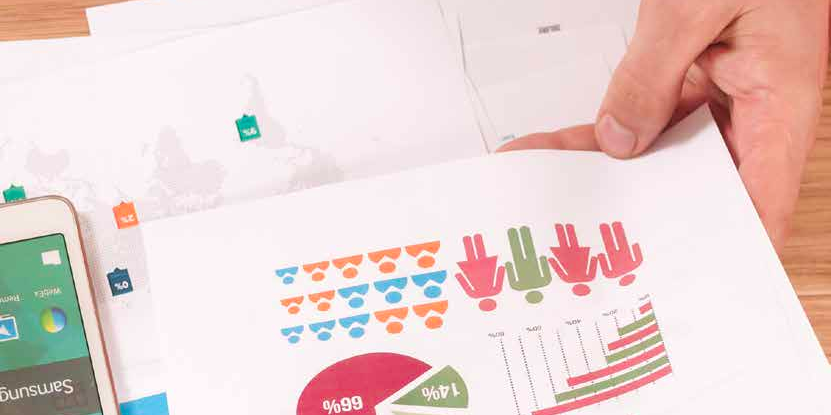How to build a SaaS B2B Sales Process

(1) Measure everything (2) Improve based on data (3) Rinse and repeat
When building a scalable direct sales model for your B2B SaaS business, you need to make your processes and the resultant revenue both repeatable and measurable.
Repeatable is important so that you can answer the following questions: (1) what will happen if we add X more salespeople? Or (2) what will happen if we add Y more leads into the top of the funnel? If your process isn’t repeatable, then these questions are very hard or even impossible to answer.
Measurable is important so that you can make data-driven decisions and improvements. Good measurement also allows you to set KPIs and targets around different parts of your funnel other than revenue. This allows you to pay your salespeople against the performance of the full funnel, or any part of it. This in turn allows you the flexibility to make changes to the compensation plans based on current business needs, and this is a powerful tool indeed for sales leaders and CEOs.
The first step to creating repeatable and measurable processes is to define your selling process. This should be based on your customer’s buying journey or process. Once that’s done and you have clear actions which help the buyer to buy, that are all either assigned to individual humans in your organisation or automated via software tooling, you can then – and only then – design your infrastructure and playbook to support that and to make it measurable.
I tend to use a mix of Salesforce, Hubspot, and Yesware for this. In this article I’ll concentrate on the inbound lead funnel within Salesforce, but in terms of this process, Hubspot is used for marketing automation and lead nurturing; Yesware is used to link your email client to the relevant lead, contact, or opportunity within Salesforce; and Salesforce itself is used to manage the flow of the lead through your sales process. This process journey moves a prospect from becoming a Marketing Qualified Lead (MQL) into an Opportunity (Opp), and eventually into a Customer (Win). I’ll concentrate on one lead source for now – inbound leads – but a similar process can be used for outbound too.
STAGE 1: Marketing Qualified Lead (MQL)
At the top of the sales funnel and the bottom of the inbound marketing funnel you have the Marketing Qualified Lead (MQL). The MQL is the baton pass between marketing’s lead generation team and the inside sales function, and the definition of an MQL forms part of the contract that exists between these two functions. This is a lead that has, either by its characteristics or actions, represented itself as worthy of sales contact. You can have lots of MQL definitions; many organisations I have worked with have hundreds, but what’s important is that you’re able to track the performance of each MQL type as it flows through your system. This allows the sales function to clearly task marketing with delivering more of MQL type 1 and less of MQL type 55 for example, and as marketing knows the characteristics that make up MQL 1, they know what they need to do.
In my experience this makes the conversation between sales and marketing around lead generation so much more productive. We can move away from marketing saying “we have given you loads of leads, why haven’t you contacted or converted them?”, and sales responding with “these leads are rubbish”. We can move the conversation towards a quantifiable measure of proven lead quality.
In my Salesforce implementations I would have a shared field between Hubspot and Salesforce called ‘MQL Type’, and I would have Hubspot set this field based on the MQL type. This field is set only once for each lead, and the field is set to sync to the opportunity upon conversion within Salesforce, so this means that we can track each MQL type all the way through to the revenue. We can see clear conversion rates for each MQL type, and we can see clear drop off points and the reasons for those drop offs. This means that we can say, for example, that each MQL 1 is worth $90 in New MRR (Monthly Recurring Revenue), whereas each MQL 3 is worth $300 in New MRR.
By ranking the MQLs in this manner, you are then able to stream the more valuable leads to the more experienced reps. This is all done via lead assignment rules within Salesforce, so is fully automated. This is a really important point and should always form part of your progression paths for the inside sales reps.
Another benefit of this ranking is the ability to manage workload effectively. When resources are low you stop calling into all MQLs worth less than X, and when resources are aplenty (maybe after hiring a new cohort), you can put the junior reps to work calling into the lower value leads. This is great training ground to cut their teeth, and also helps you to better understand what the ideal threshold is.
The threshold of which MQL will get human contact from sales should form part of the contract between sales and marketing. There should be clear service level agreements around what constitutes an MQL worthy of sales time, and also what effort sales will make to contact and qualify each of these MQLs.
Further to this, it’s my opinion that the lead generation team within marketing should be held accountable via KPIs, targets, and a variable portion of their pay to delivering not just more MQLs, but MQLs of the correct and most valuable type.
STAGE 2: Sales Accepted Lead (SAL)
The next stage of the inbound sales funnel is the Sales Accepted Lead (SAL). These are MQLs that a human has looked at and agreed to attempt to contact, usually by your inbound Business Development Representative (BDR) team. The BDRs will disqualify the obviously bad leads, the mickey.mouse@waltdisney.com, and the phone number 1234567, etc. They will also discount duplicates. Everything else, they will start trying to contact using the agreed upon contact strategy that forms part of the contract between sales and marketing. The MQL to SAL conversion percentage is the first measurement within your sales funnel to be aware of, and should again form part of the contract with marketing. So now, for example, marketing are held accountable for delivering X number of MQLs worth more than Y, and also having >90% of those accepted by sales.
Hopefully you can see how this data-driven and structured approach can really help the conversation between marketing and sales, and hold everyone properly accountable.
STAGE 3: Contacted
The next stage is Contacted. You need to track what percentage of these SALs you manage to get in touch with, and which of your contact points was the one that managed to reach them. For example, your agreed contact strategy might involve five calls over a two week period, interspersed with three personal emails. It’s important that you track which of these is the most effective at making contact.
When you have clear differences in contact rate between team members, you can start to drill into this to understand why, and use this to coach and improve. It’s amazing how much of a difference small things can make: email subject lines, the name of the rep sending the email, and the structure of a voicemail message can all make huge differences to the contact rate.
STAGE 4: Qualifying
The next stage is Qualifying. These are MQLs that you have managed to contact but who have not yet met your qualification criteria. The classic qualification criteria that everyone knows is Budget Authority Needs Timeline (BANT), but you should definitely develop your own based around your understanding of what’s important to your closure rate.
It’s important that you have a contract and SLA between the BDR team and the Account Executive (AE) team on what constitutes a Sales Qualified Lead (SQL), as this will help to define the qualification criteria used here.
The important things to measure in the qualifying stage are: (1) the amount of time that each lead sits in this stage; (2) the amount and % of leads that get disqualified from this stage and don’t make it to an SQL; and (3) the volume of leads that each rep has in this stage at any one time. Each of these measurements, when compared across your team, tells you something different about your reps and can be used for coaching purposes or in KPI setting etc.
STAGE 5: Sales Qualified Lead (SQL)
The next stage is the Sales Qualified Lead (SQL) stage. This is where the lead has been qualified by the BDR team as being a good fit for the product (they’ve passed the above qualification criteria), and also as being motivated and able to proceed with a purchase. Here you will want to measure the conversion rates from SAL to SQL, the conversion rate from MQL to SQL, the time taken from MQL to SQL, and also a host of other metrics like SQL by industry, geography, company size, etc. SQLs are the lifeblood of your business, as these are the truly qualified leads that you are about to set your expensive salespeople loose on. You need to understand where they come from, how they are made up, and how you can get more of them.
This is the point of the handover from the BDR team to the AE team, and also the point where the lead is converted into an opportunity in Salesforce.
The really important thing to understand and to remember from all of this is to always measure everything. As you build and instrument your sales machine, think about how you can measure the flow of leads, and think even harder about what that data can tell you. Then use the data, display it publicly, talk about it daily, explain it to everyone, and use it to make informed decisions.
If you measure well and make informed incremental improvements based on the data, then you have true continuous improvement, and who can ask for more than that!
Angus Chudleigh is a growth stage specialist at RingMD.








